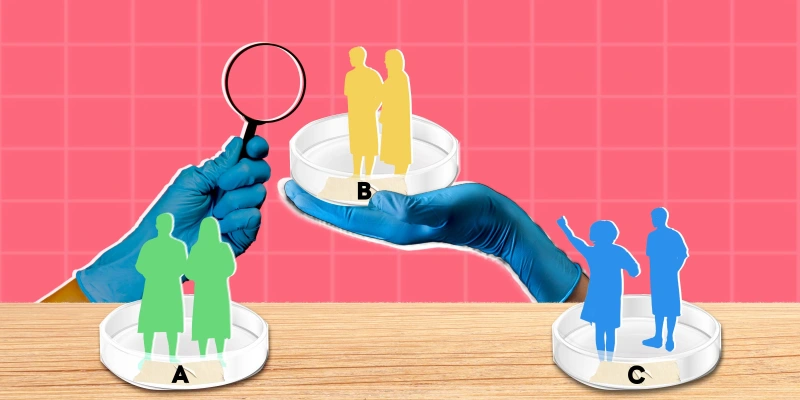
As a physician-in-training in the late 1970’s, I had rotated among a variety of inner-city public hospitals and learned clinical skills on patients who were grateful to have someone care enough to provide treatment for them.
There were street people who needed to be deloused before the “real” doctors would touch them and there were alcoholic diabetics whose gangrenous toes would self-amputate as I removed stinking socks. There were people with gunshot wounds and stabbings who had police officers posted at their doors and rape victims who were beaten and overdosed into submission and silence. Someone needed to touch them with compassion when their need was great.
As a 25-year-old idealistic and naïve medical student, I really believed I could make a difference in the six weeks I spent in any particular hospital rotation. Of course, that proved too grandiose and unrealistic, yet I did make a difference, sometimes not so positive, in the few minutes I spent with a patient.
As part of the training process, mistakes were inevitable. Lungs collapsed when putting in central lines, medications administered caused anaphylactic shock, spinal taps induced pain and spinal headaches—each error creates a memory that never will allow such a mistake to occur again. It is the price of training a new doctor and the patient always pays the price.
I was finishing the last on-call night on my obstetrical rotation at a large and busy military hospital that served an army base. The hospital was built during WWII as a series of far-flung, one-story bunker buildings connected by miles of hallways, so that if one part of the hospital were to be bombed the rest could still function. The wing containing delivery rooms was factory medicine at its finest: a large ward of twenty beds for laboring and five delivery rooms that were usually busy all at once at all hours. Plenty of teenage wives were delivered during my weeks there — children delivering babies they had no idea how to parent.
I had delivered 99 babies during my 6-week rotation and my supervising residents and nurses wanted to make sure I hit 100 deliveries before I walked out of the hospital in the morning. After delivering four women that night, I fell into bed in the call room at 3 AM hoping for at least two hours of undisturbed sleep.
Within an hour I was shaken awake by a nurse saying I was needed right away for an 18-year-old primigravida who arrived in advanced labor, ready to push, only a few minutes before. My 100th delivery was imminent. I sat down at the business end of the delivery table, blinking and blinded by the bright lights, barely coherent as I greeted the almost-parents as the baby’s head was crowning.
The nurses bustled about the room setting up for the delivery, putting on the heat lamps over the bassinet, readying the specimen pan for the placenta, and laying out the items necessary for an episiotomy (a routine and actually unnecessary procedure in all deliveries at that time). I noticed there was no resident in the room, which is a requirement for a medical student about to deliver a baby, and asked that the resident on call be summoned to supervise me.
I knew the drill. Gown up, gloves on, sit on a rolling stool between the mother’s propped legs, stretch the vulva around the crowning head by thinning and massaging it to try to avoid uncontrolled tears of the perineum. I injected anesthetic into the thinning skin to numb it, then made an incision to allow more room for delivery of the baby’s head. Amniotic fluid and some blood splashed down onto my shoes and the familiar sweet salty smell of imminent birth permeated everything.
As the full head crowned and I had bulb-sucked out the baby’s nose and mouth, I noted it looked a bit dusky, so quickly felt for a tight neck cord, but none found. The next push came quickly and a bluish-purple, floppy baby slid into my lap. I quickly clamped and cut the cord and rubbed the little boy vigorously with a towel. There was no response, no breath.
A nurse swooped in and grabbed the baby, moving over to the isolette to start resuscitation. There was chaos everywhere. Suddenly, sleepy doctors appeared through the doors, shocked awake by a blue floppy baby. The parents wept, inconsolable.
I sat stunned, trying to review what had gone wrong and when. I realized in the rush to prepare for a precipitous delivery, there had been so much activity that I had not thought to ask if anyone was monitoring the baby’s heartbeat. No one was. The last documented heart rate of 140 beats per minute was only twenty minutes earlier, when the parents arrived and the mother was beginning to push.
It was a terrible and unacceptable oversight, there was no excuse we could offer. When the placenta delivered, it was apparent there had been an undetected and unsuspected partial abruption that interrupted circulation to the baby sometime in the previous few minutes. This baby had just died, all while in the hands of people who might have saved him with an emergency C-section had we been monitoring continuously.
The little lifeless body was resuscitated for twenty minutes and then the code was called and time of death pronounced. The parents held each other sobbing as I sewed up the episiotomy in silence. I had no idea what to say and was mortified and anguished to witness such agony of loss. I apologized for not being there sooner for them, and not being able to prevent this horrible event. They said nothing to me as I left the room, pulled away by my resident into a side room to practice intubating the little dead baby so I would have experience with something other than a mannequin. I couldn’t see the vocal cords through my tears but I did what I was told, as I always did.
Later I cried in the bathroom, miserable with guilt at my hand in this loss. Instead of a perfect “100” deliveries, I learned that death intervenes in life unexpectedly without regard to age or race or status or wishes or ambitions. Though I went on to deliver hundreds of babies as a family physician, I never could forget the baby that might have had a chance if he had been monitored as he should have. This baby would be in his forties with children of his own by now, his parents proud and loving grandparents.
I do wonder if I’ll meet him again someday, this little soul that almost was, should I be forgiven enough to share a piece of heaven with all the little babies who never got to draw a breath on earth, including one of my own five years later. Then, perhaps then, I will feel forgiven for my part in his loss.
Dr. Emily Gibson is a family physician, farmer, poet, wife, mother and grandmother. She has worked in inner city Primary Care, community and rural health, detox and sexual assault centers, and as the medical director of a University Student Health Center for three decades. Both a photographer and writer, she shares daily about her life and work on her Barnstorming blog.
Dr. Gibson is a 2018–2019 Doximity Author.







